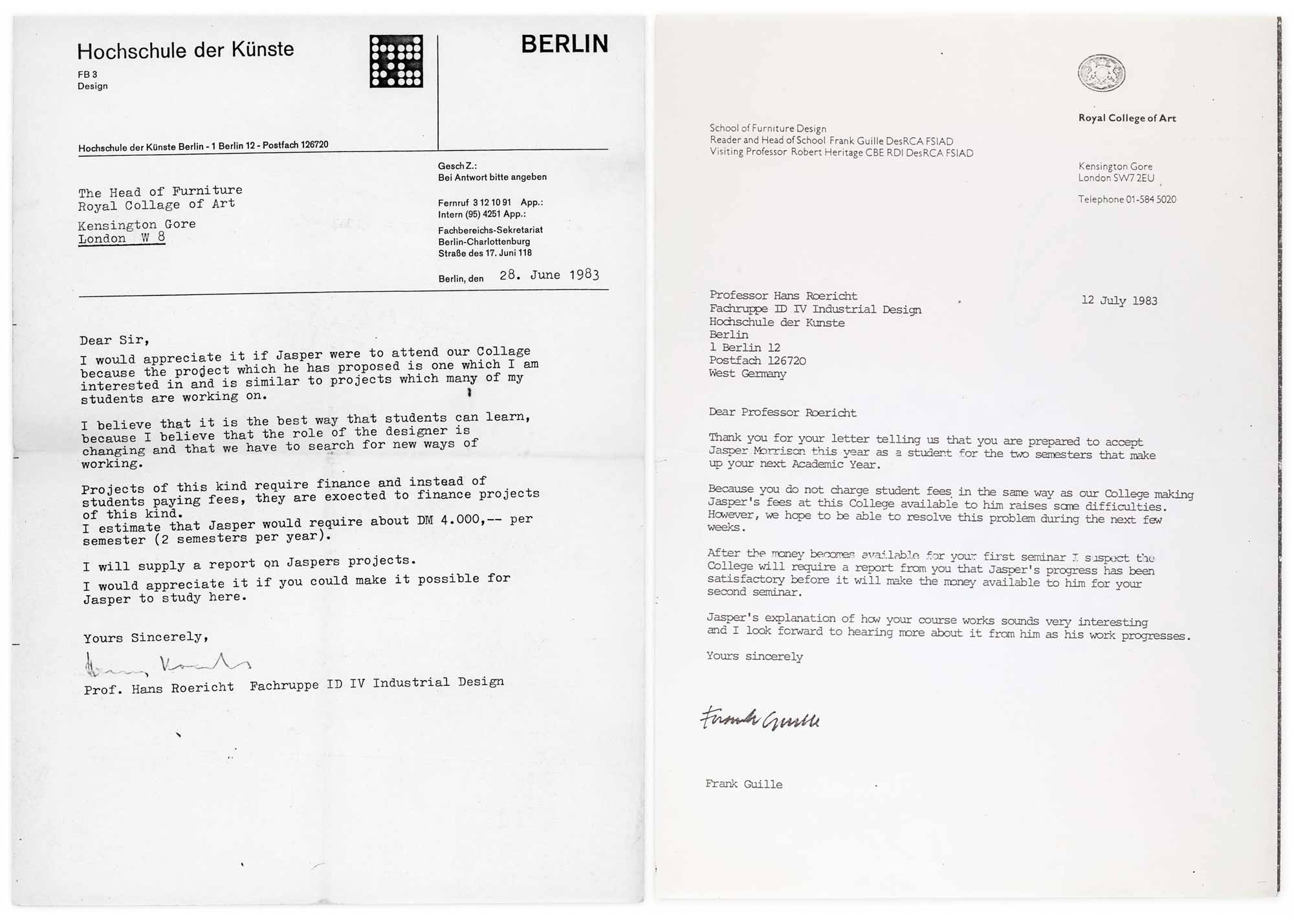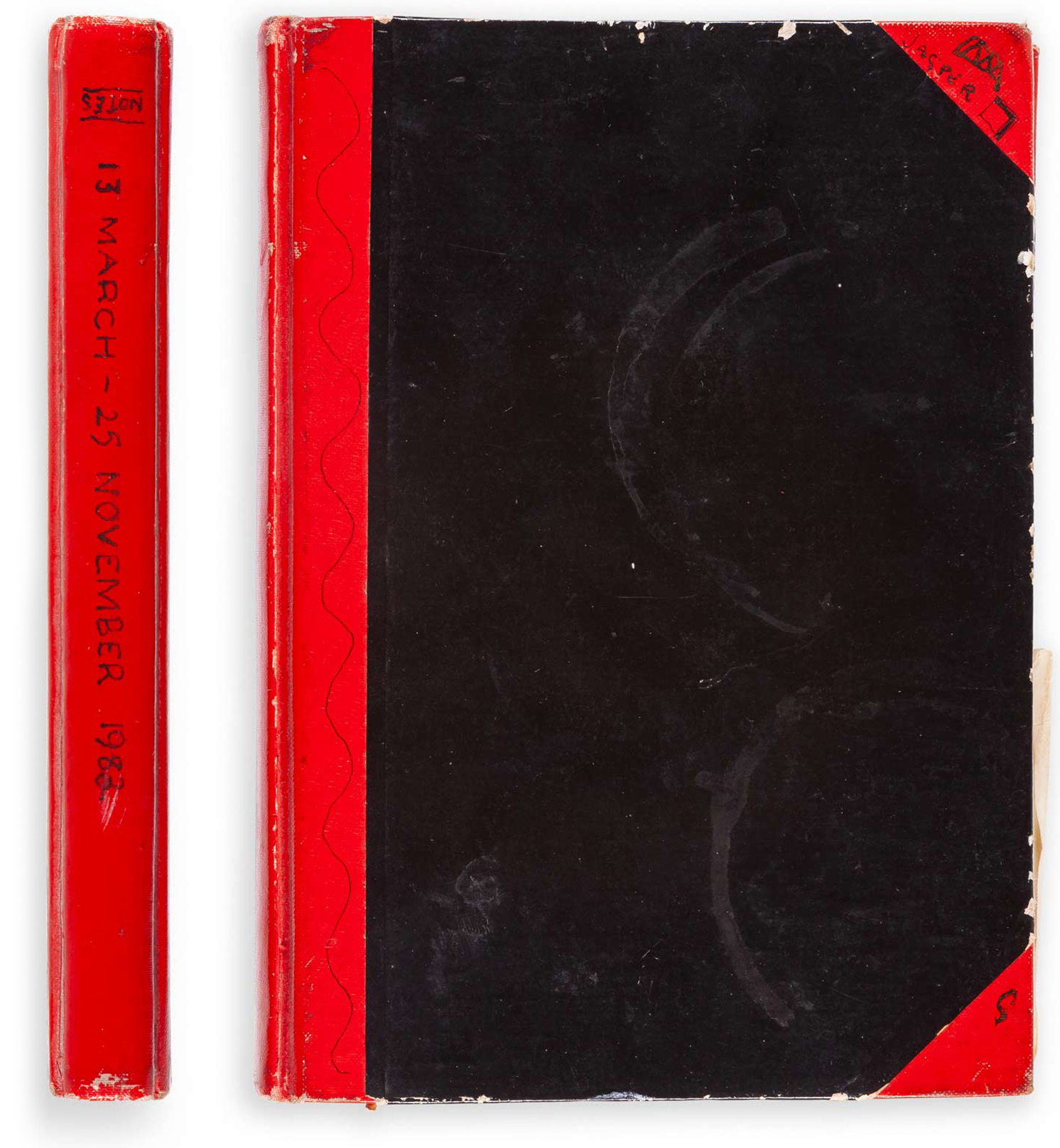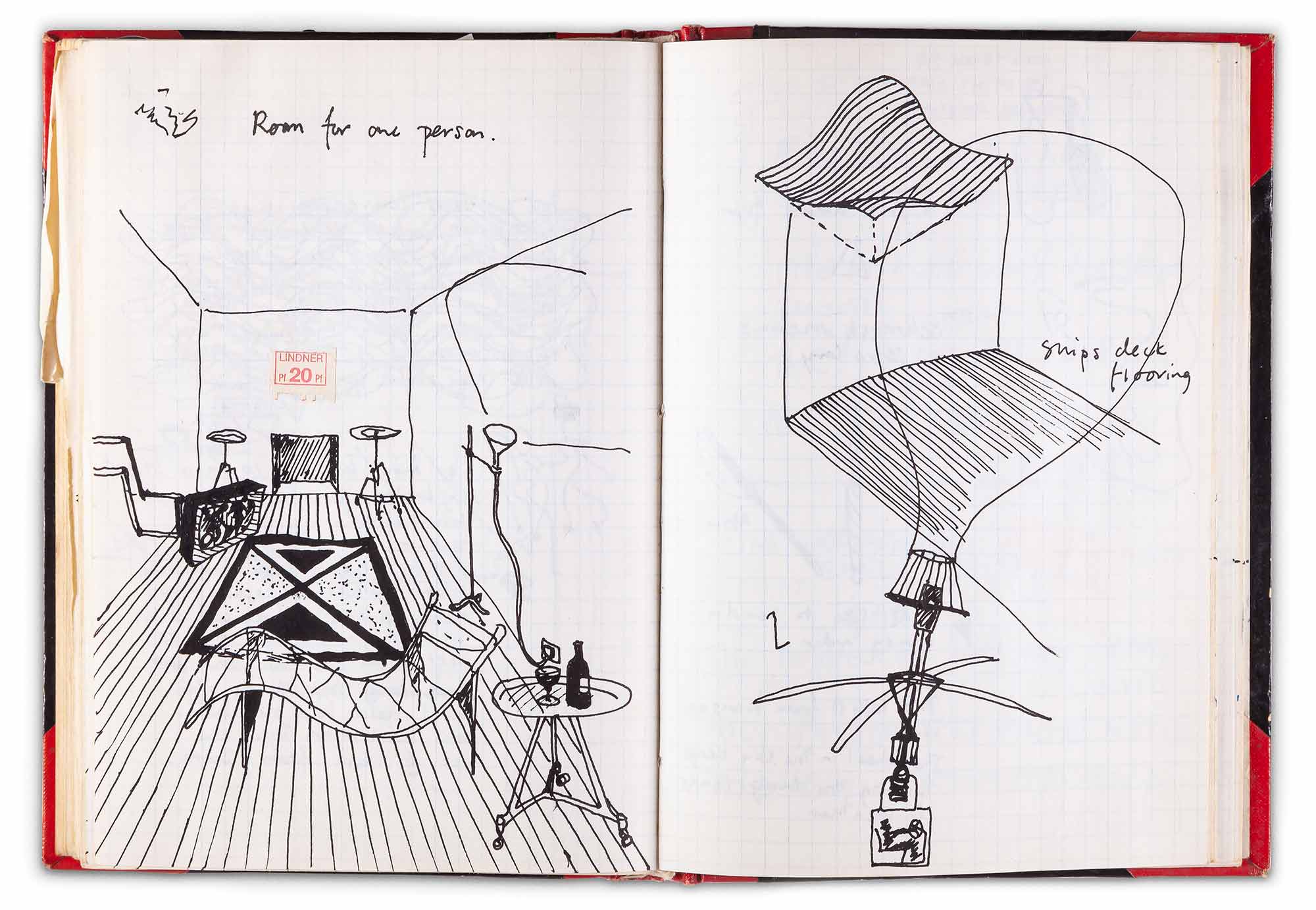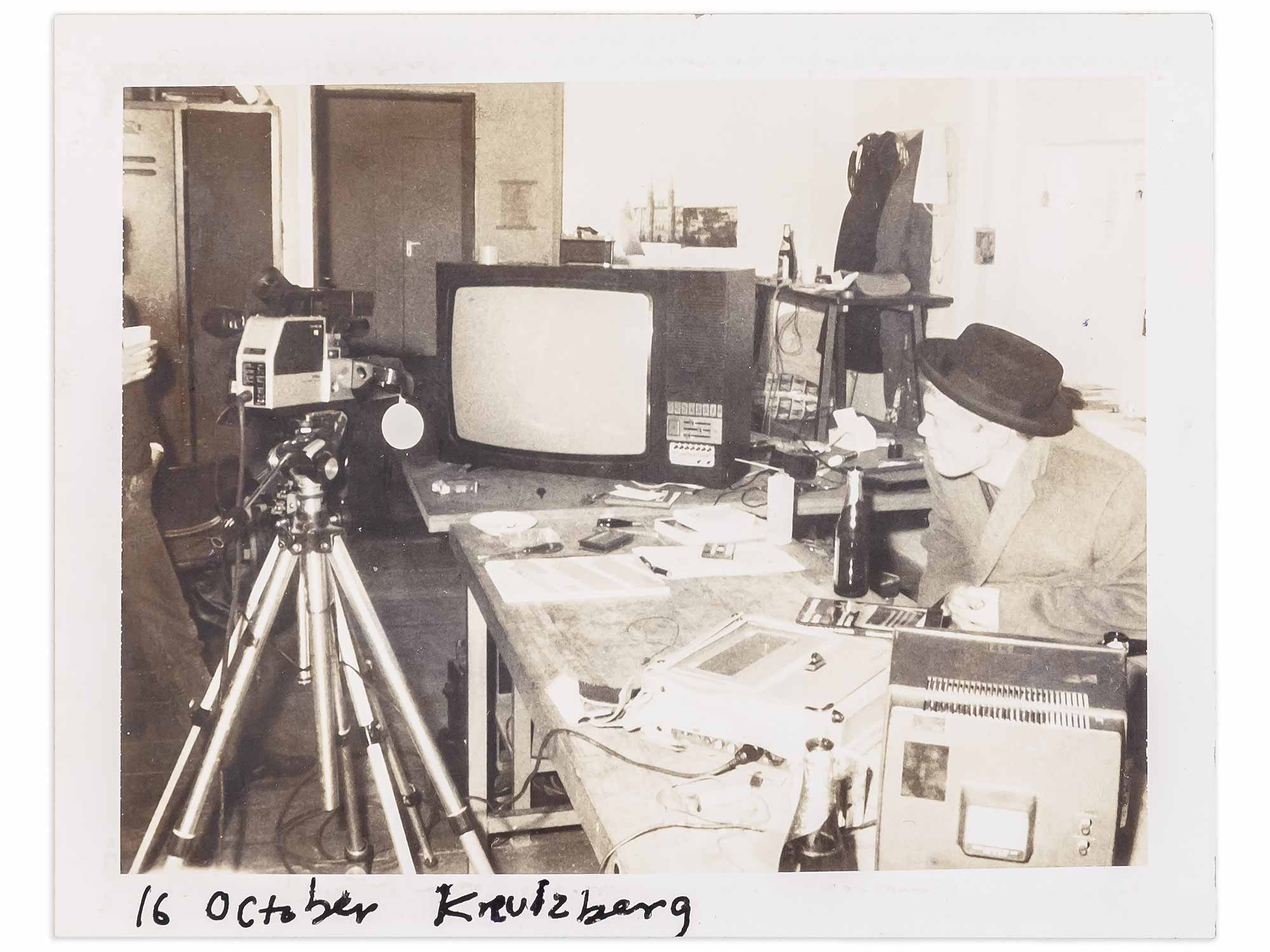In May 1983 Jasper won a scholarship from the FvS Foundation to study in Germany for a year. He chose to study at the Hochschule der Künst in Berlin, in place of his second year at the Royal College of Art. He noted in a sketchbook ‘Berlin begins 14 Oct ’83’. On arrival he lived on Fritschestrasse c/o George Braun. In 1984 he lived on Leonhard Strasse.
Jasper chose Berlin because Andreas Brandolini was teaching at the Hochschule der Künst as an assistant professor. Jasper had met Brandolini the previous year at the Rastlos meeting. Hans Roericht (also known as Nick) was then a professor at the Hochschule. In June, Roericht wrote a letter to the Royal College formally requesting that the College allow Jasper to study with him, and stating the need for the College to send funding to cover the project Jasper had proposed, in place of fees.
Hans Roericht’s request to the Royal College that Jasper study at the Hochschule (left). The College gave a grudging assent to the arrangement (right).
Jasper’s project proposal ran as follows:
A project with emphasis put on the designer being also the manufacturer. In other words, a very strong emphasis on the commercial aspects of a design. Not only the costing of materials are to be considered but also the labour involved in making and distributing the product to the correct selling points. The market should be clearly defined and the retailers carefully selected to reach this market. The commercial success of this project depends on the labour involved being minimal. The use of prefabricated or ready-made components might play an important role in reducing construction times. These components might be used totally out of context so long as they fulfil their structural and functional roles, and add to the overall visual appearance of the product.
In a college situation a project of this kind can bring us closer to the realities of the commercial side of design than a project where a full costing of materials and labour is estimated, because it is for real and no amount of calculations can provide us with an accurate picture of the manufacturing business. It also gives the designer confidence that he can provide a market with his designs and forces him to resolve the design past the prototype stage. The importance of this is that when the designer does come to deal with manufacturers he is more aware of both the manufacturer’s problems and the market for which he is designing.

Jasper’s project proposal with corrections by Frank Guille. Jasper used the back of the draft to practise his German.
In July, Frank Guille, the head of furniture design, wrote to Professor Roericht to confirm the College’s acceptance of the arrangement. Guille agreed to make Jasper’s college fee available to him for the project, on the condition that he provided a written report at the end of each of the two semesters. Professor Roericht also promised the College he would write regular reports on Jasper’s progress. He let Jasper write the reports and he signed them.
Jasper remembers Roericht as being rarely there; nor was there much of a student community. Still it was a busy, social, productive period. In his first term, Jasper designed a light of ready-made components, he participated in an exhibition in Hamburg, and he visited East Berlin. He used the funding from the Royal College to pay for Kaufhaus des Ostens, a project with Brandolini and Joachim Stanitzek. In June 1984, they put on an exhibition, where Jasper showed lights, a prototype of the Flowerpot Table and other ideas.

A sketchbook Jasper took with him to Berlin and filled up with sketches, notes and ephemera of his first term there. (It measures 13 x 18 cm.)
On the eve of his departure for Berlin, Jasper was interviewed for a magazine. The journalist Hugh St Clair reported that Jasper’s work ‘has been compared with the hyper-trendy work of the Memphis group, but he hates to be seen as a Memphis clone. “I think that their style is too restricted. I want to experiment more with different designs and materials. I hope to learn about that in Germany. They are constantly experimenting with new ideas. ... After I’ve done my year in Berlin I want to come back here and mass-produce some of my work. I use inexpensive materials so it does not cost much to reproduce.”’

The sketchbook Jasper took with him to Berlin. On the left, a room featuring the recently designed Laboratory Light and Rise Table, with a German supermarket stamp on the wall. On the right, Jasper sketched the idea for a curved floor. Over it, he drew a hot air balloon.

The Graphic Communicator, designed in Berlin and on sale in the Kaufhaus des Ostens exhibition in 1984.
